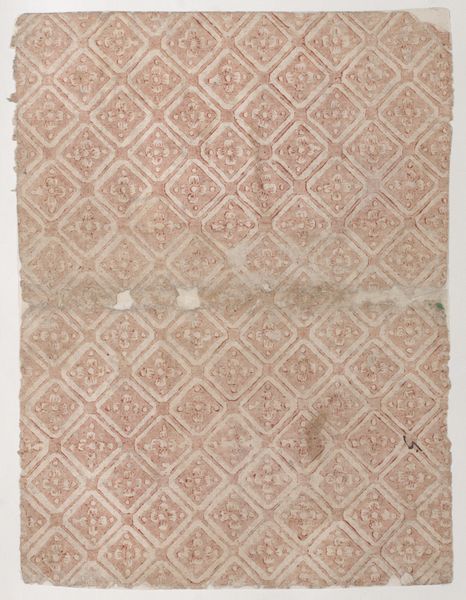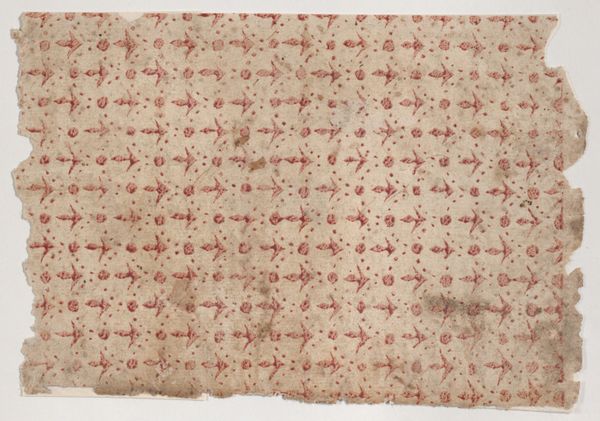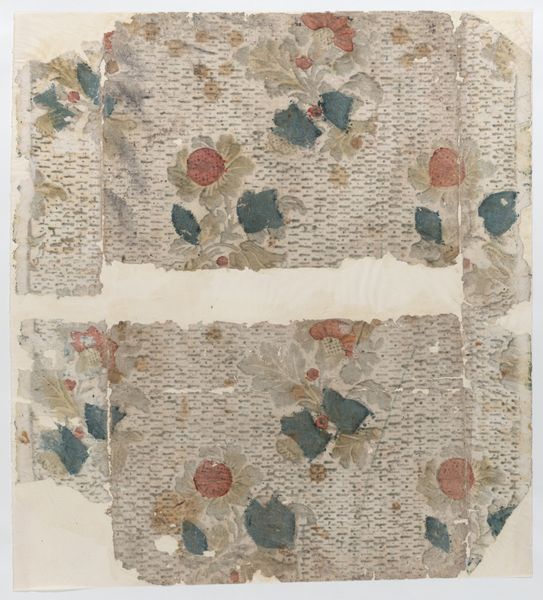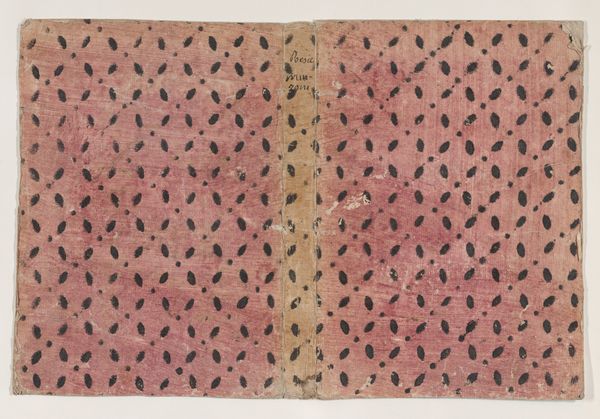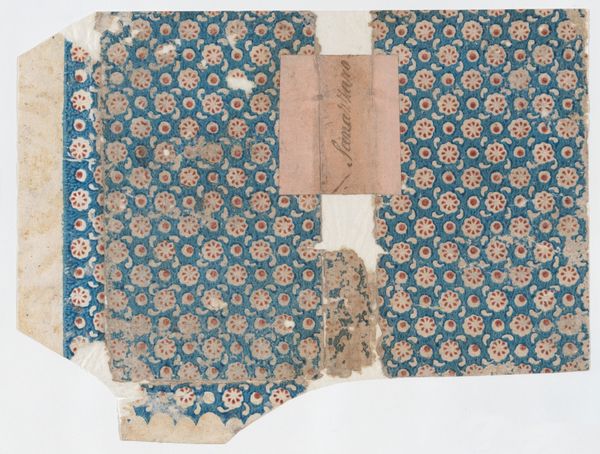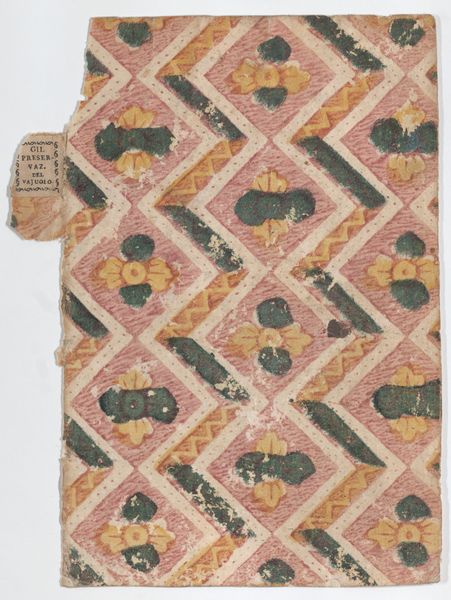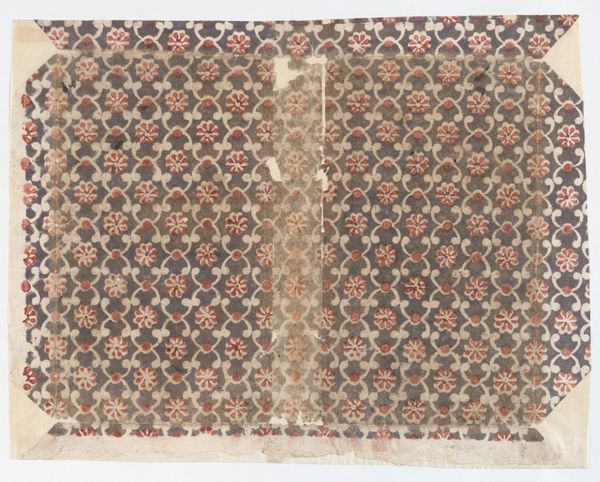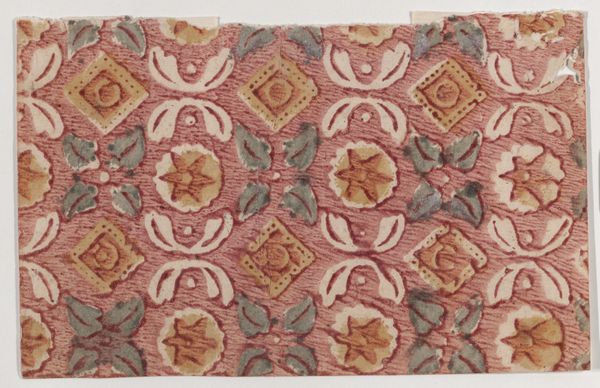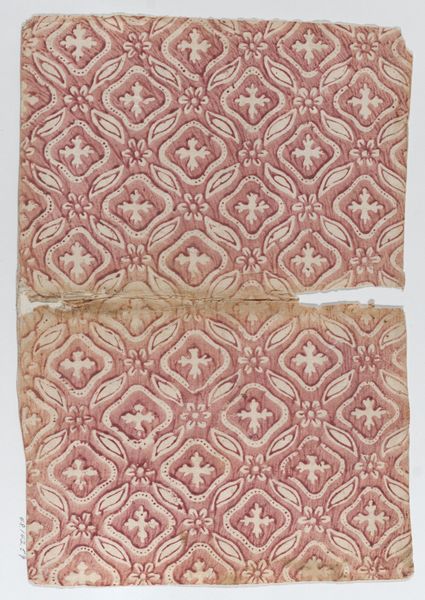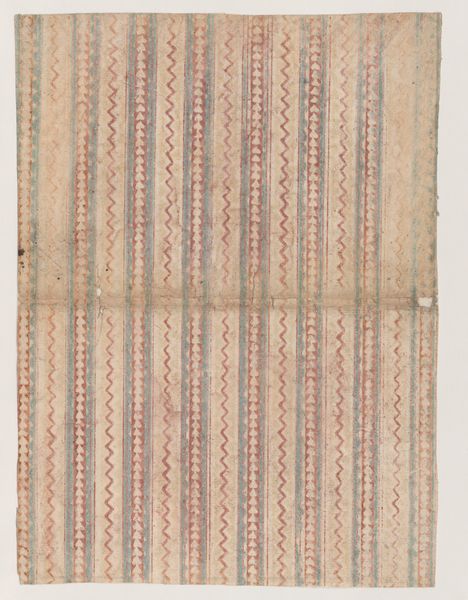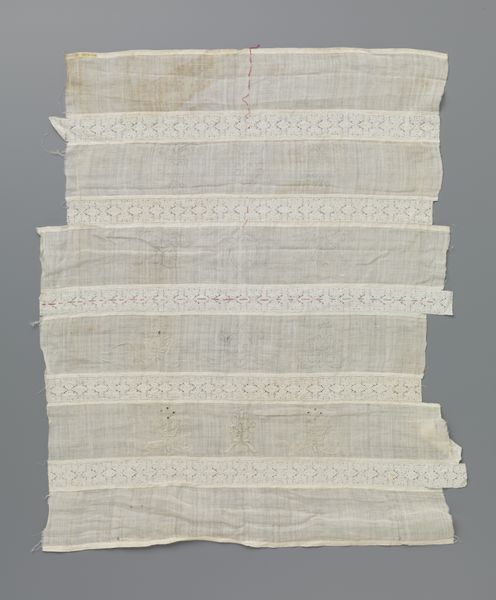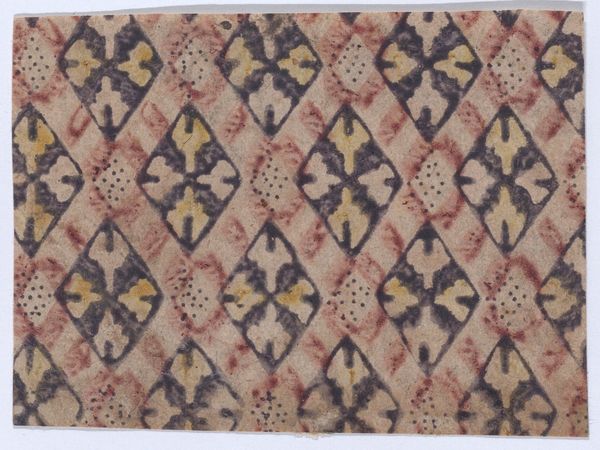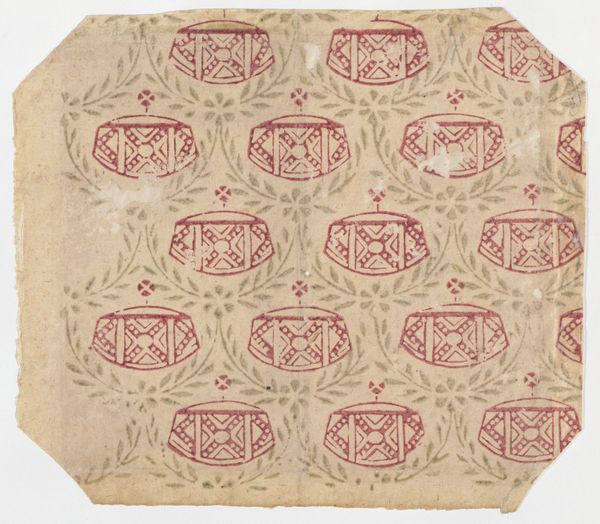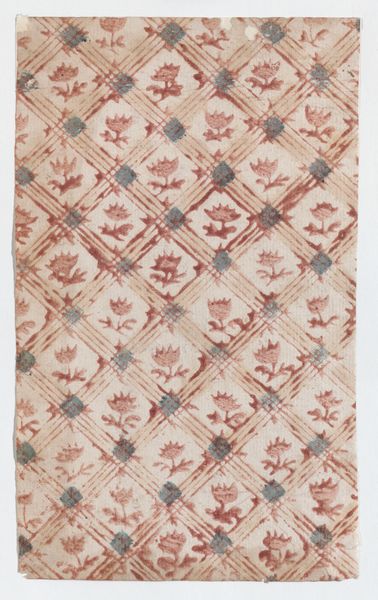
Book cover with red geometric and flower pattern 1800 - 1900
0:00
0:00
#
water colours
# print
#
geometric
#
decorative-art
Dimensions: Sheet: 9 5/16 × 14 3/16 in. (23.7 × 36 cm)
Copyright: Public Domain
Curator: This object is listed as a book cover featuring a red geometric and flower pattern. It dates back to sometime between 1800 and 1900, and resides here at The Metropolitan Museum of Art. Editor: The damage is significant but also fascinating! What remains evokes a quiet, domestic aesthetic. It is also fascinating, perhaps ironically, how even within what looks like an even surface treatment, the floral motif is the figure, not the geometric backdrop. The red feels faded yet enduring, but this gives it a softer quality. Curator: Precisely! Observe how the anonymous creator repeats this subtle floral motif inside a defined, geometric framework. The eye is drawn to this interplay. Note also that this book cover offers more than mere utility; its design elevates the object. It asks us to consider the role of art in the everyday. Editor: Yes, but let's dig deeper into that 'everyday', particularly concerning the labour involved. This would likely have been made by underpaid female labour to decorate a text primarily read by upper class folks with leisure time. By interrogating this interplay of luxury versus utility, we reveal a lot about the social order of the period, no? Curator: While context certainly has a part to play, the repeating forms, particularly how each one conforms precisely to its place in a carefully balanced grid, is the most compelling quality. We also have to discuss how the damage itself adds to our reading. A Formalist perspective is never at odds with considering history, merely, structure. Editor: Sure, the formal is important, but so too is our need to ask questions around this type of luxury print: its production, use and access, and by whom. We are, after all, talking about the legacy and function of decoration itself here, which so many people labour on, in contrast to the very few consumers who get to actually benefit from such embellishments. Curator: An astute, contextual consideration. Ultimately, I am intrigued by how an everyday object prompts a deep examination into design and craft. Editor: As am I – through different angles of engagement, we both found compelling avenues for reflecting on an ordinary and accessible artwork.
Comments
No comments
Be the first to comment and join the conversation on the ultimate creative platform.
